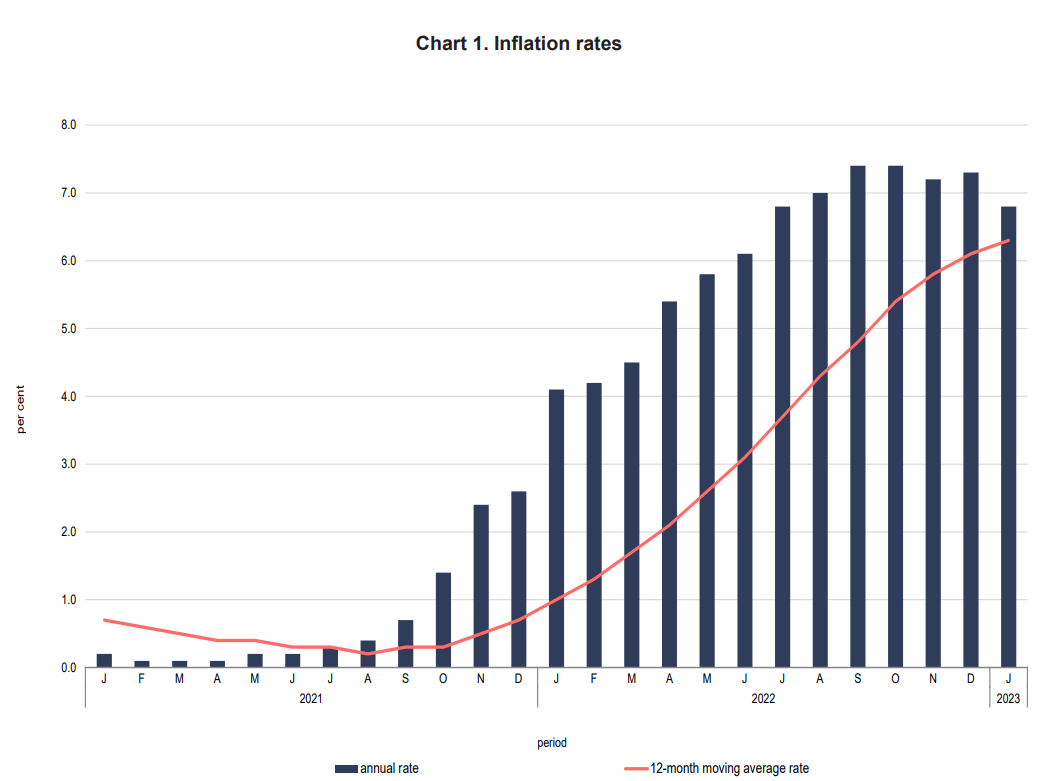Malta’s rate of inflation dropped by 0.5 per cent from 7.3 per cent to 6.8 per cent in January 2023, marking the first time inflation has been below 7 per cent since August 2022, and the largest month-to-month drop since 2018.
The 12-month moving average for inflation stood at 6.3 per cent for January, up 0.2 per cent from December 2022.

Food and non-alcoholic beverages continue to be the main drivers of upward annual inflation, notching up 11.7 per cent, followed by clothing and footwear (9.5 per cent) and housing, water, energy and fuels (9.1 per cent).
The main reason why the cost of food has continued becoming more expensive, is due to the rising cost of meat, according to the NSO.
Although clothing and footwear is the second largest category to have contributed to the annual rate of inflation, it also saw the largest drop in its monthly inflation rate, down 11.6 per cent.
On the other hand, the lowest annual inflation rates were registered in communication (1.3 per cent) and alcoholic beverages and tobacco (2.4 per cent).
While inflation is still below the eurozone average, the gap between Malta and the rest of the euro area is getting smaller. As of January 2023, the eurozone’s rate of inflation was 8.6 per cent, just two percentage points more than Malta’s. This is a stark contrast compared to October 2022 when the gap between Malta and the eurozone was 3.5 per cent.
Overall, the gap between Malta’s and the eurozone’s annual rate of inflation shrunk by 42.8 since October 2022 and is trending to continue doing so.
2025: Three experts on the year technology outpaced certainty
Daniel Thompson-Yvetot, Simon Azzopardi and Keith Cutajar on the year that passed and the year ahead.
2025: The year equal pay for equal work landed in the public sector
Tthe GWU says the future of work will hinge on whether growth is made to serve people
Turkey on top but ribeye gains ground: Butchers explain what’s on Malta’s festive tables
BusinessNow.mt speaks to four local butchers to see what the Maltese are cooking up in their homes






